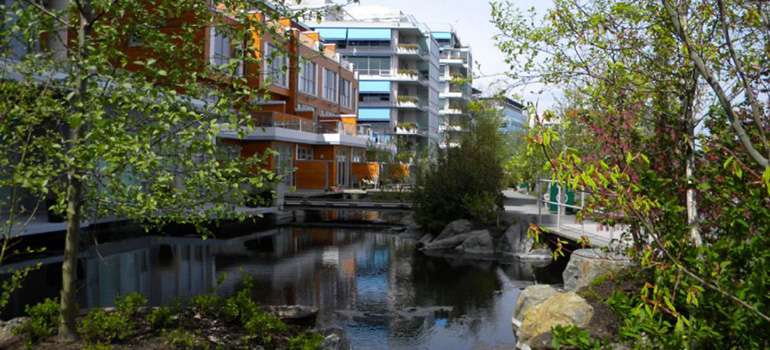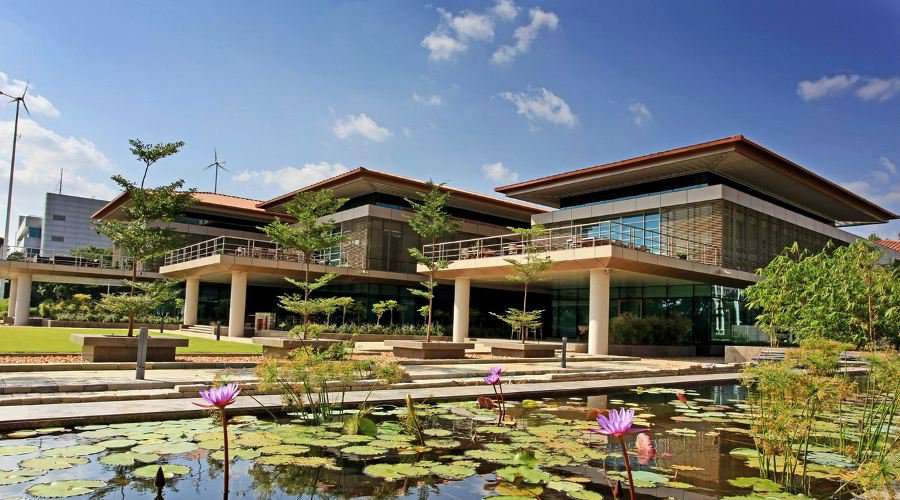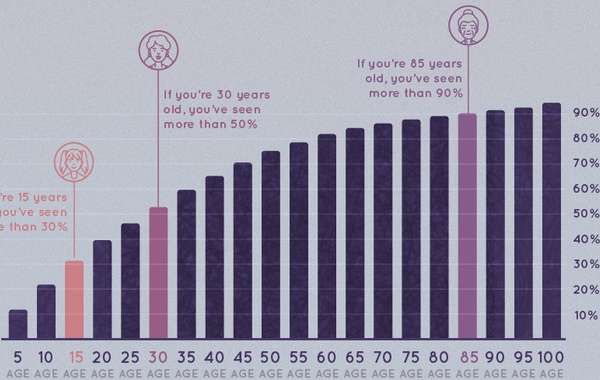Courtesy of the USGBC, the following is a guest post by Harvey M. Bernstein, Vice President of Industry Insights & Alliances, McGraw-Hill Construction and John Mandyck, Chief Sustainability Officer for United Technologies Climate, Controls & Security.
There is no doubt that sustainability initiatives and environmentally responsible products have transformed how buildings are being designed and constructed. We have seen examples of how buildings—from small schools to large-scale iconic urban developments—have embraced this ethos of high performance and low environmental impact in both new construction and renovation projects on existing buildings. And this transformation has not taken place in one country, one type of economy or one type of climate. It is occurring in all corners of the world.
In order to understand the significance of that growth, we believe professionals must have data and dialogue to make more informed decisions about how they design and construct buildings in the future in order to create a more sustainable built environment. At the same time, the growth of this industry can help spur innovation and create new markets for green expertise, products and services.
That’s why McGraw-Hill Construction and United Technologies, with support from the World Green Building Council and the U.S. Green Building Council, partnered to launch a study to help understand the trends in world green building today and how they have changed since 2008 when the first global green study was conducted by McGraw-Hill Construction (Global Green Building SmartMarket Report, 2008). This new study is published in the recently released World Green Building Trends SmartMarket Report: Business Benefits Driving New and Retrofit Market Opportunities in Over 60 Countries.
Firms’ Green Investments and Drivers to Adoption
The results were clear—green building is growing around the world. According to the study, firms are shifting their business toward green building, with 51 percent of study firms planning more than 60 percent of their work to be green by 2015. This percentage of firms is a significant increase from 28 percent in 2012 and double from 13 percent in 2009. The most notable part of the results is that this growth is not a trend localized to one country or region. From 2012 to 2015, the number of firms anticipating that more than 60 percent of their work will be green:
- More than triples in South Africa.
- More than doubles in Germany, Norway and Brazil.
- Grows between 33 and 68 percent in the United States, Singapore, the United Kingdom, the United Arab Emirates and Australia.

This increasing focus on sustainability from building owners will be a significant driver of market growth—as other owners look to compete and offer tenants healthy, productive environments. The key driver to going green according to the survey is that now green building is a business imperative around the world. In the 2008 report, McGraw-Hill Construction found that the top driver for green building was “doing the right thing.” However in 2012, business drivers, such as client and market demand, are the key factors influencing the market. These findings support what we’ve seen in the market—that the green building movement has shifted from “push” to “pull” and that by increasing the efficiency for energy, water and waste, green buildings can also lower building costs and create a building that holds its value for longer than comparable non-green buildings.
Creation of Green Product Markets and Business Benefits
As green building has grown, so have the markets for new products, innovations and services. In 2012, 89 percent of global industry professionals report using or specifying a green building product, and even more—91 percent—expect to do so by 2017. The most significant green building product opportunities are in the categories of electrical, mechanical, and thermal and moisture protection with at least 60 percent of the report’s survey respondents stating that they had installed or specified products in these categories in 2012, and a slightly higher percentage expecting to do so by 2017. While these same three categories were all in use in 2008, they were far less widely deployed and were used by only between 47 to 51 percent of respondents. This translates to significant market opportunities and support for the development of new green building product and process solutions.
These opportunities are lining up with expected benefits from building green versus non-green, with 76 percent reporting that green building lower operating costs, and more than a third also pointing to higher building values (38 percent), quality assurance (38 percent), future-proofing assets (i.e., protecting against future demands, 36 percent). Not only do they see it as a benefit, global industry professionals have high expectations of the operating cost benefits of green building—51 percent believe there will be increases of 6 percent or more, and 67 percent believe they will see savings of 6 percent or more over five years.
These are only a few of the key findings from the report that can help drive decisions for a greener future. For example, there are similarities and differences to help create nation-specific strategies. We hope you will download the full copy and extract the intelligence that will be of most value to your business or organization. More information can also be found at McGraw-Hill Construction, United Technologies Natural Leadership, World Green Building Council, and USGBC.
About the authors:
Harvey M. Bernstein has been a leader in the engineering and construction industry for over 30 years. Currently, he has lead responsibilities for McGraw-Hill Construction’s (MHC) market research group, including its thought leadership initiatives in areas such as green building, BIM, innovation and global construction markets. Bernstein was one of the team members involved in launching MHC’s award-winning GreenSource magazine. Previously, Bernstein served as the president and CEO of the Civil Engineering Research Foundation, and he currently serves as a member of the Princeton University Civil and Environmental Engineering Advisory Council and co-chair of the National Building Museum’s Industry Council for the Built Environment. He is a visiting professor at the University of Reading’s School of Construction Management and Engineering in England, where he also serves on their Innovation Construction Research Centre Advisory Board. Bernstein has an MBA in Corporate Marketing from Loyola College, an MS in Engineering from Princeton University and a BS in Civil Engineering from the New Jersey Institute of Technology.
John Mandyck serves as chief sustainability officer for United Technologies Climate, Controls & Security. He assesses global environmental trends to guide product development, brand positioning and market opportunities. In addition to sustainability, he leads the company’s marketing and communications function. He interfaces with global environmental stakeholders and leading organizations such as the U.S. Green Building Council, which Carrier helped found in 1993, the World Green Building Council and others. John serves as co-vice chairman of the Board of Directors for Urban Green Council, the U.S. Green Building Council’s New York City Chapter. In addition, he also serves on the Center for Green Schools Advisory Board, and as an official advisor to China’s Green Building Council. John also serves as co-chairman of the U.S. Department of Energy’s Appliance Standards and Rulemaking Federal Advisory Committee. He has presented energy efficiency and sustainability strategies to audiences around the world.
Now that you know green building trends. Find more pages about sustainable and resilient green building techniques here on these pages and in the Ecohome Green Building Guide pages
See here to learn about the benefits of a free Ecohome Network Membership, see here. |






































Comments (0)
Sign Up to Comment